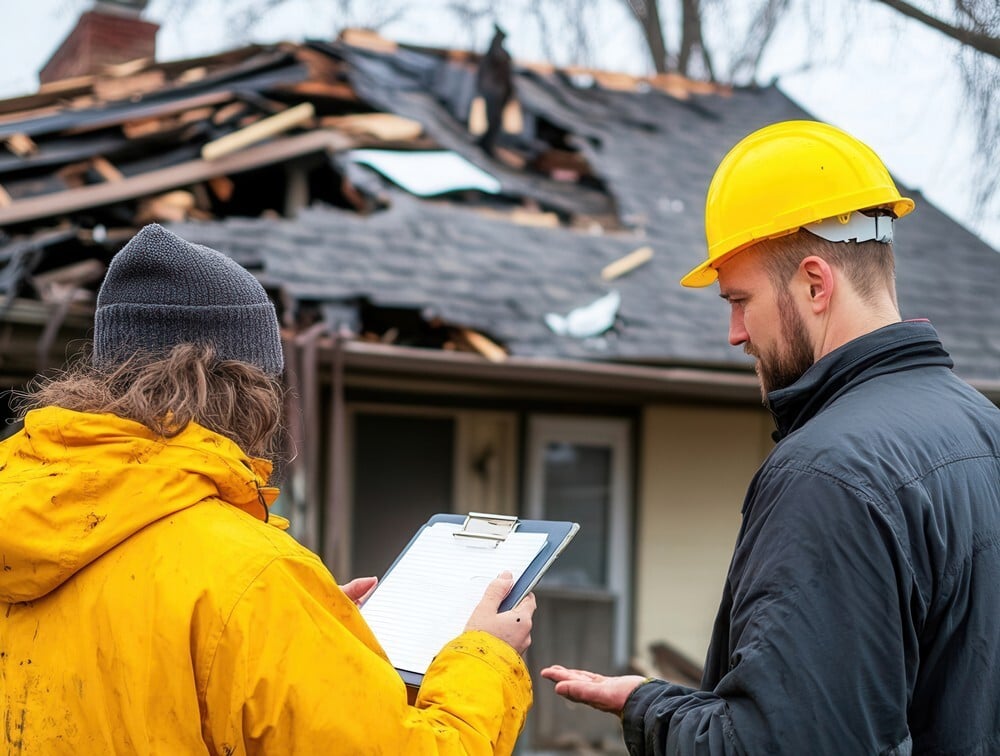What is Hazard Insurance For a Home? A Guide for Homeowners
May 16, 2025

Whether you're purchasing a traditional home or a manufactured home, one essential concept you'll encounter is hazard insurance. But what exactly is hazard insurance, and how does it apply to different types of properties and loans?
Hazard insurance is a type of property insurance that protects the structure of your home against specific perils, such as fire, wind, hail, vandalism, and other unforeseen disasters. Hazard insurance for a manufactured home functions similarly to standard coverage—it ensures that, in the event of damage from a covered hazard, the cost to repair or replace your home is partially or fully reimbursed.
Hazard insurance coverage is the part of a homeowner's insurance policy that deals specifically with structural damage to the home caused by named perils. For manufactured homes, this can include the main structure, attached decks or porches, and sometimes detached structures like sheds. However, manufactured homes often require specialized policies due to differences in construction, foundation, and risk exposure.
Typical covered hazards include:
- Fire and smoke
- Hail and windstorms
- Lightning
- Theft and vandalism
- Damage from vehicles
Floods and earthquakes are typically excluded and must be added to your policy by endorsement or insured separately if the coverage is required.
When you finance a home, your lender will require proof of hazard insurance. This ensures the property's value is protected while you’re paying off the loan. For buyers of manufactured homes on permanent foundations, the mortgage requirements are often the same as those for site-built homes.
How does Hazard Insurance Vary by State and Region?
Hazard insurance isn’t one-size-fits-all. The type and cost of hazard insurance can change significantly depending on where your property is located. This is because certain regions face higher risks for specific natural disasters, which influences both the coverage requirements and insurance premiums.
Here’s how regional differences can affect your hazard insurance:
Tornado-Prone Areas (e.g., Midwest, Southern Plains)
States like Oklahoma, Kansas, and parts of Texas are frequently hit by tornadoes. In these regions:
- Wind and hail coverage is critical.
- Policies may have separate windstorm deductibles.
- Premiums can be higher due to increased risk.
Coastal Areas and Hurricane Zones (e.g., Florida, Louisiana, Carolinas)
Hurricane-prone states often require additional policies beyond standard hazard coverage:
- Windstorm coverage is sometimes excluded and must be purchased separately.
- Flood insurance is often essential and mandated by lenders if the property is in a FEMA-designated flood zone.
- Florida, in particular, has complex regulations and higher premiums due to storm frequency and insurance market volatility.
Wildfire Zones (e.g., California, Colorado)
In states with high wildfire risk:
- Insurance companies may charge steep premiums or refuse coverage entirely in high-risk areas.
- Some homeowners may have to rely on state-sponsored insurance programs (e.g., California FAIR Plan).
- Vegetation clearance and home hardening can sometimes reduce costs or improve insurability.
Cold and Snowy Regions (e.g., Northeast, Upper Midwest)
While these areas face lower risk from hurricanes or wildfires, they present their own hazards:
- Ice dams, roof collapse due to snow load, and frozen pipes may be covered, but often with specific conditions.
- Homeowners should check for winter-related clauses or exclusions.
Volcanic and Earthquake Zones (e.g., Hawaii, Alaska, parts of California)
Standard hazard insurance does not cover earthquakes or volcanic eruptions:
- Separate earthquake insurance is needed (especially in California).
- Hawaii may require lava flow or volcanic eruption endorsements.
Why It Matters
If you’re buying a home, especially a manufactured home, knowing the regional hazard risks helps you:
- Choose the right insurance coverage.
- Budget for insurance premiums realistically.
- Comply with lender requirements.
- Reduce risk by preparing your property proactively.
What is the Difference Between Hazard Insurance and Homeowners Insurance?
A common source of confusion is the difference between hazard insurance and homeowners insurance. In reality, hazard insurance is one component of a broader homeowners insurance policy. While hazard insurance covers physical damage to your home, homeowners insurance also includes:
- Liability coverage
- Personal property protection
- Loss of use (temporary housing expenses)
Manufactured homeowners, just like site-built homeowners, typically can purchase a bundled policy that includes hazard and other standard protections.
Conclusion
Understanding hazard insurance is key, whether you’re protecting your home, manufactured home, business, or investment property. While it’s often bundled into broader insurance policies, the hazard component plays a crucial role in safeguarding your property from disasters and meeting lender requirements. If you own or plan to buy a manufactured home, pay special attention to the policy details to ensure full and appropriate coverage.
